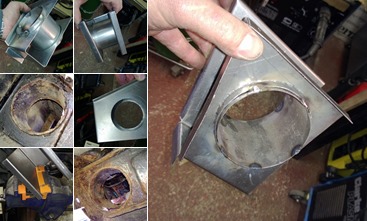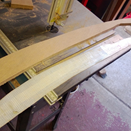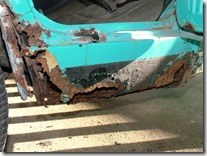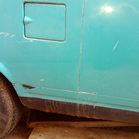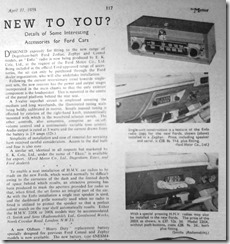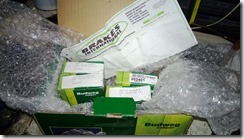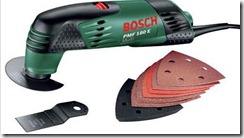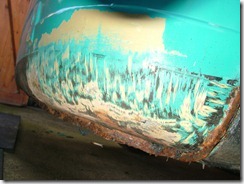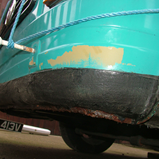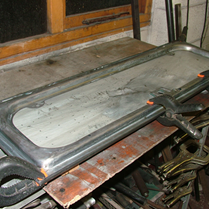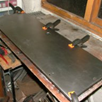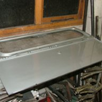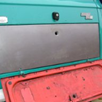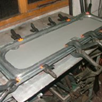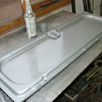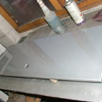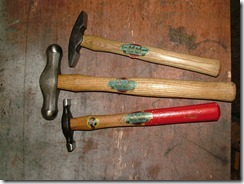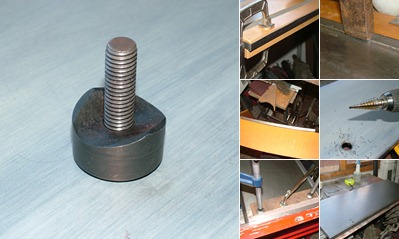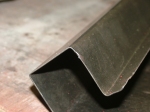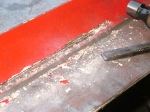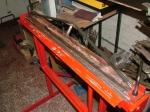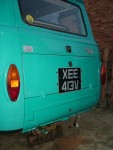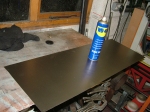I’ve chased the corrosion back from the sill all the way to the chassis outriggers now. The rear one has a hole for the petrol tank filler neck and it’s badly corroded at the bottom behind the jacking point. I deliberated for a while about just repairing the bottom but the thought of trying to remake the afore mentioned hole whilst grovelling underneath left me cold. I decided to make a whole new outrigger on the bench and graft it on where the cancer ends. Let the fabrication begin.
I sketched up the piece to be made and took as many measurements as I could from the remains of the original. It can be really tricky to find suitable reference points to get all the dimensions right and it took a considerable amount of time before I was satisfied. Then I marked out some 18 gauge and started cutting and folding. I used a plywood template as a guide for the air nibbler to cut the holes which I then flared to accept the tube I created for the filler neck hole. I’ll cut the old one off and slot the new one into the void created, then MIG weld all around it. Doesn’t that sound easy.
